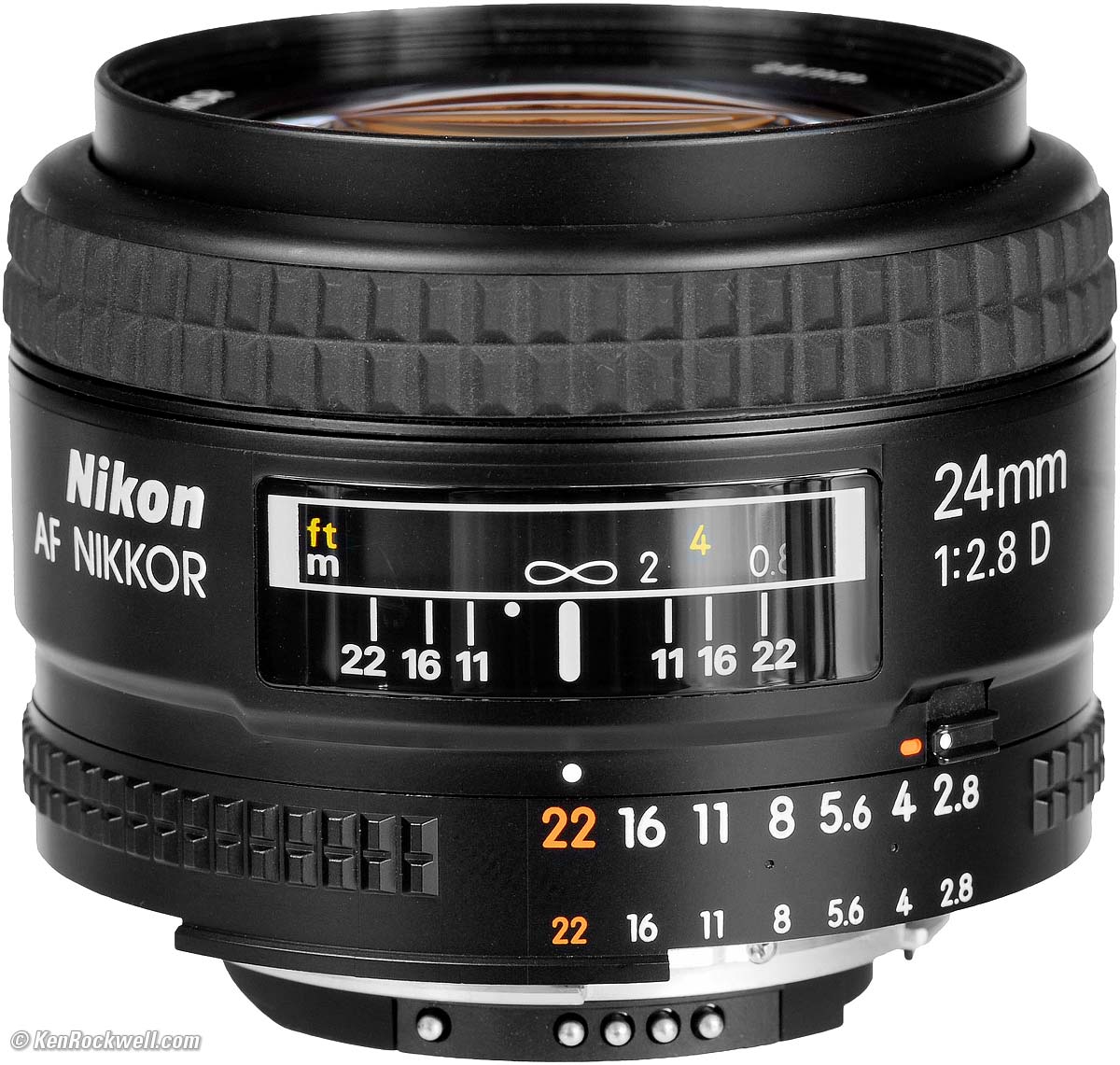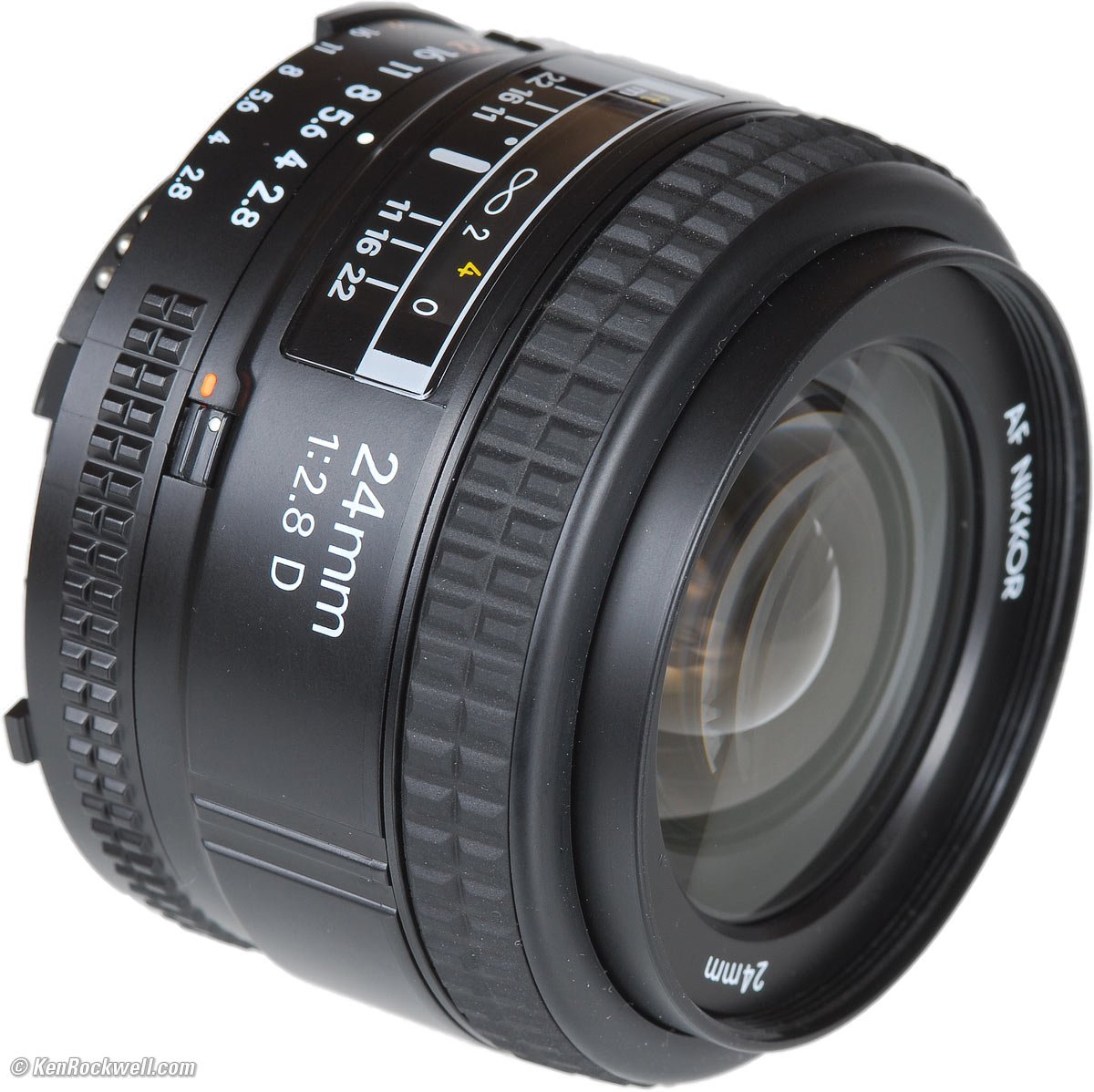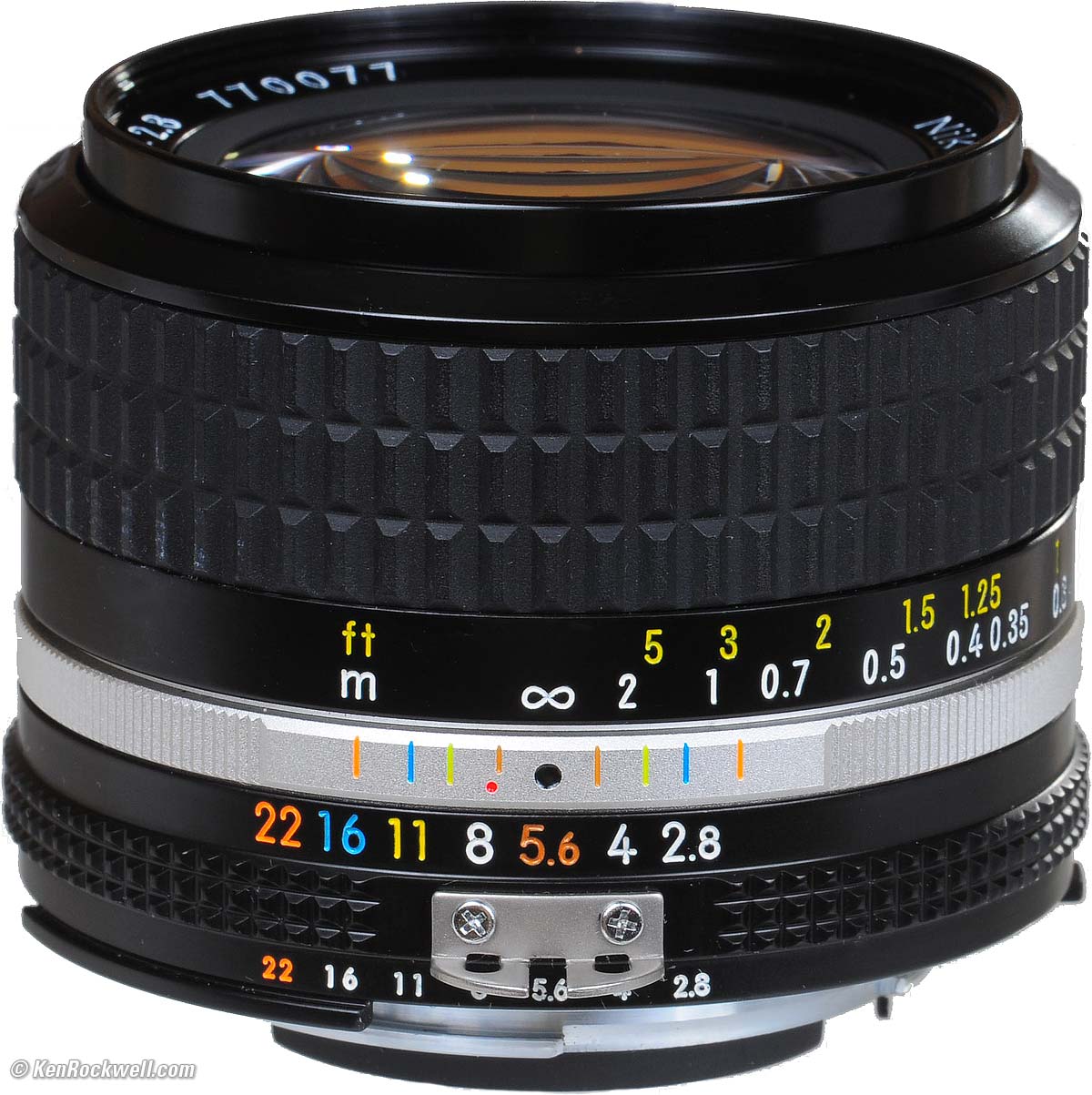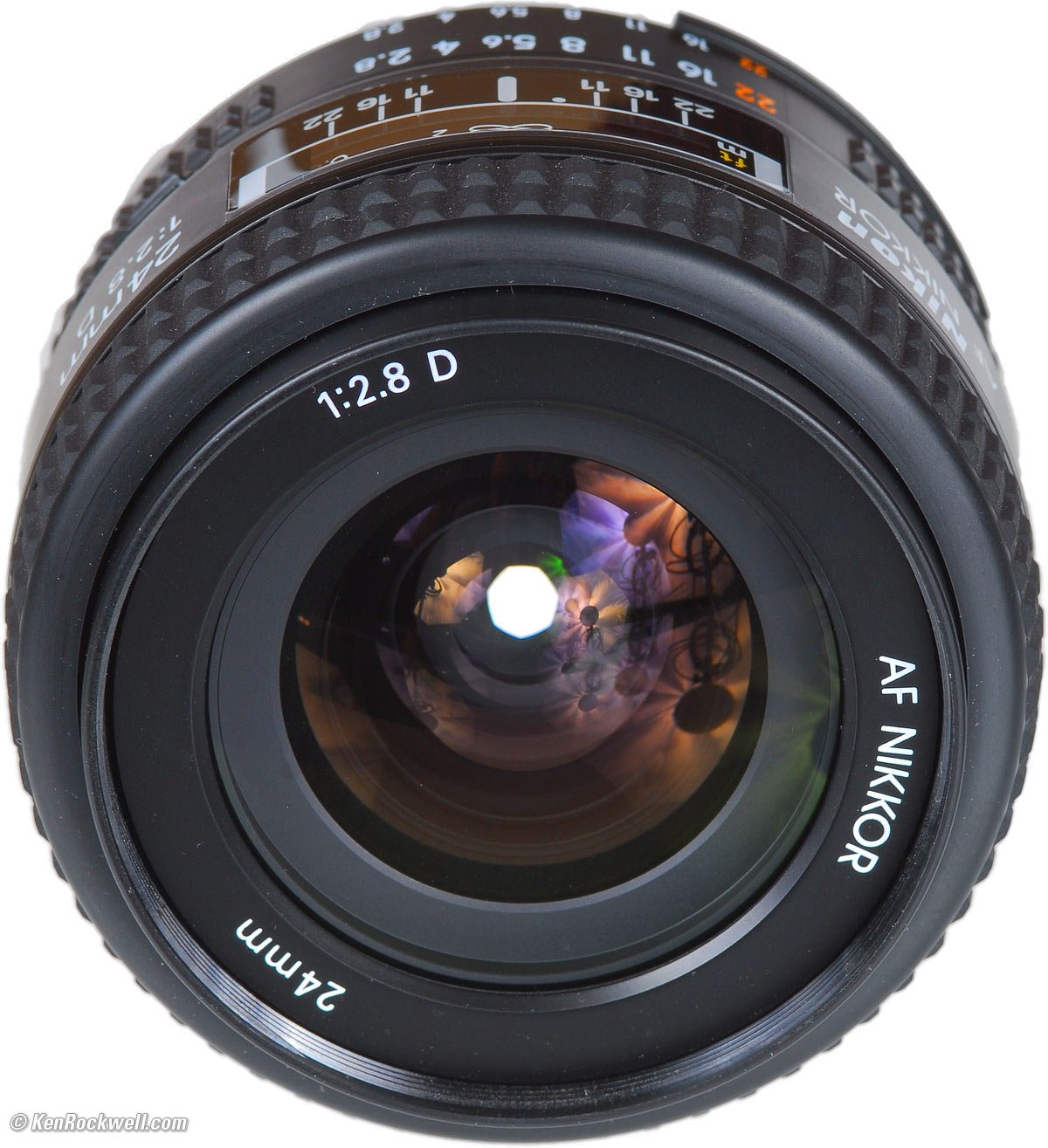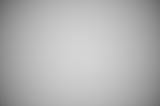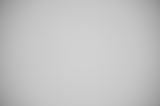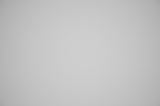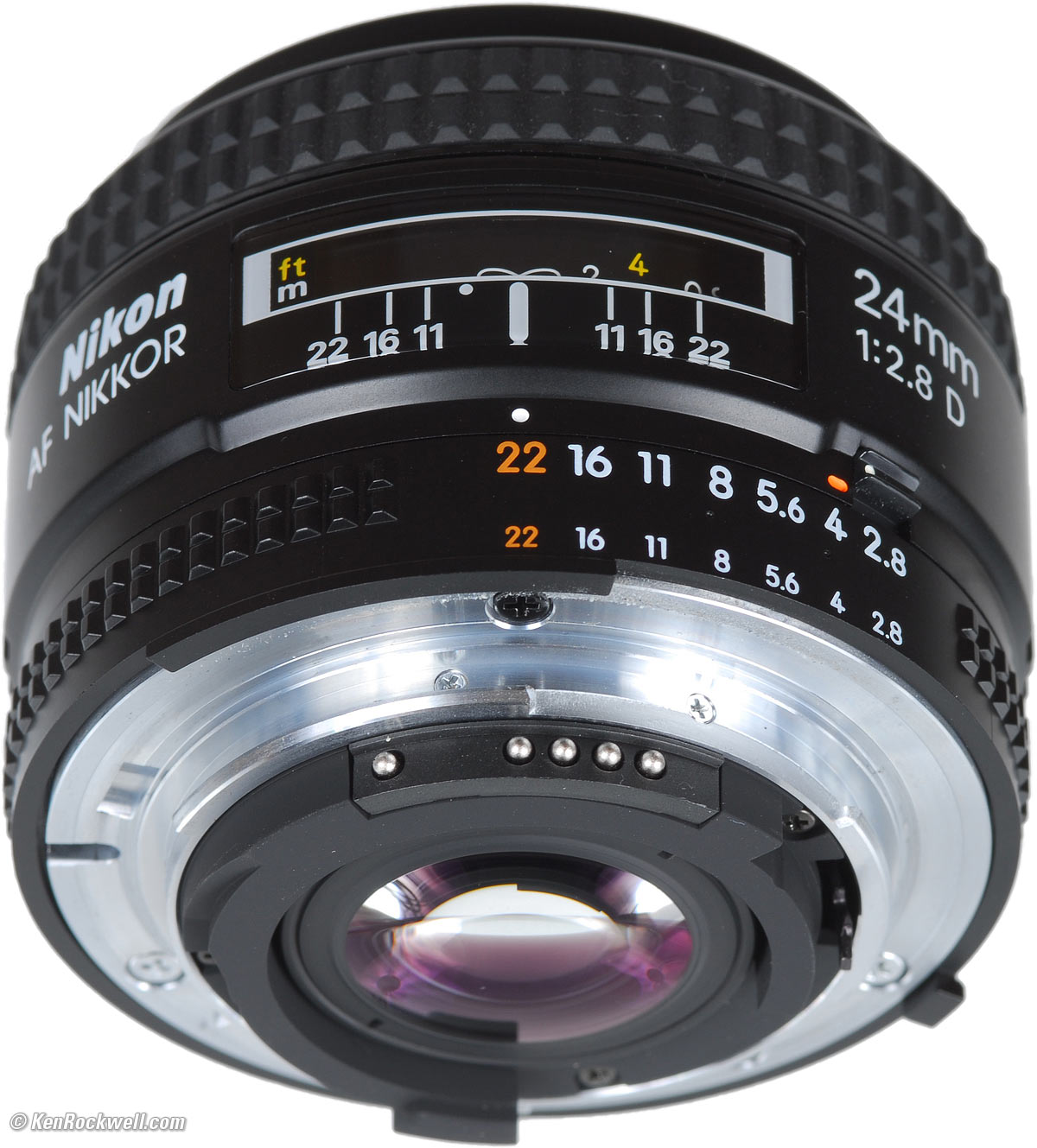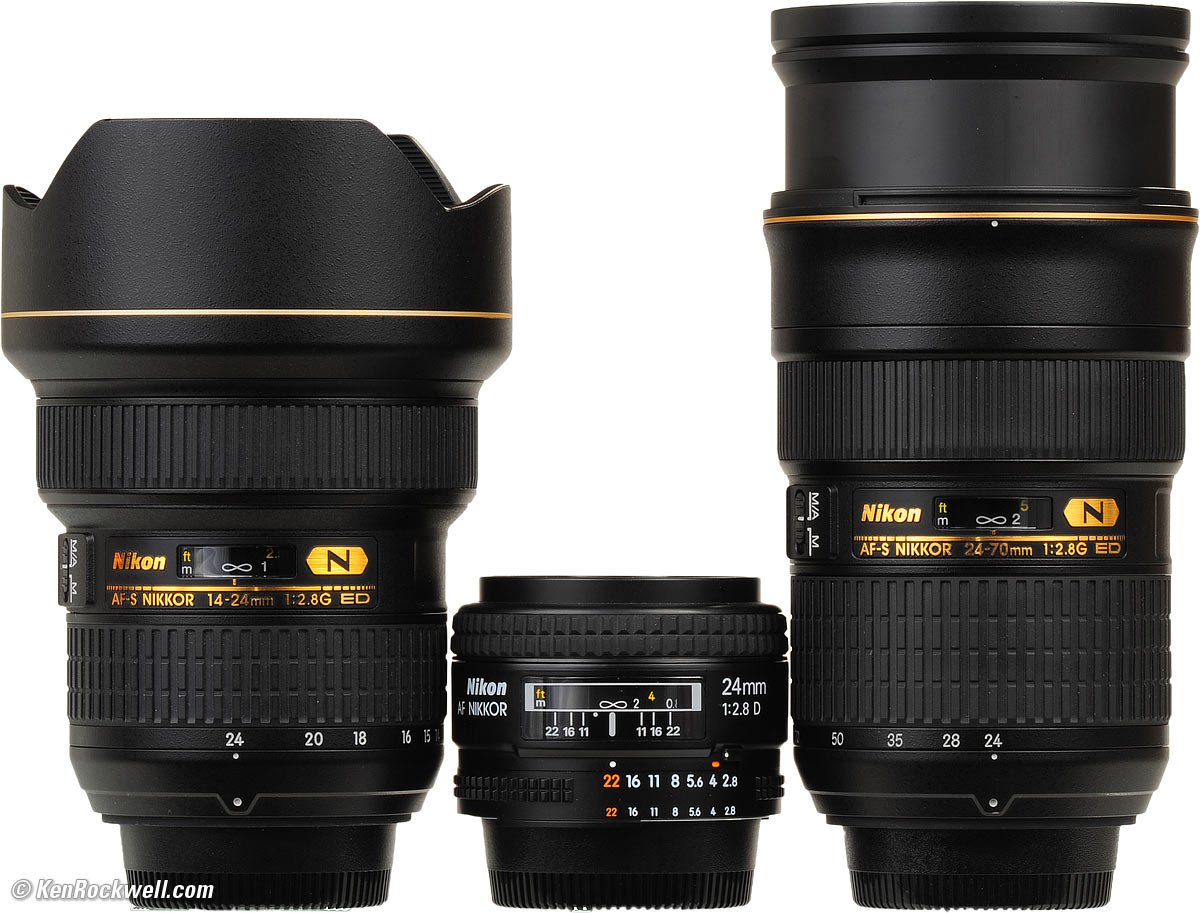Home Donate New Search Gallery How-To Books Links Workshops About Contact
Nikon 24mm f/2.8
AF and AF-D NIKKOR (1986-today)
Intro Specifications Performance Compared Recommendations
Nikon AF-NIKKOR 24mm f/2.8 D (52mm filters, 9.4 oz/268g, about $392). enlarge. I'd get it at Adorama, at Amazon, or at B&H. You also can get it used at eBay for about $175 if you know How to Win at eBay.
This all-content, junk-free website's biggest source of support is when you use those or any of these links to my personally-approved sources when you get anything, regardless of the country in which you live. Nikon does not seal its boxes in any way, so never buy at retail or any other source not on my personally approved list since you'll have no way of knowing if you're missing accessories, getting a defective, damaged, returned, non-USA, store demo or used lens. Get yours only from the approved sources I use myself for the best prices, service, return policies and selection. Thanks for helping me help you! Ken.
April 2018 Nikon Reviews Nikon Lenses Nikon Flash All Reviews
Sharpness Comparison to all other 24mm lenses
Why Fixed Lenses Take Better Pictures
Ideal Uses: Inexpensive, lightweight lens for use on FX digital, DX digital and film.
Not for: I wouldn't bother with this on a DX camera. I'd use any DX lens, like the 18-55mm kit lens, instead. This lens will not autofocus with the cheapest D40, D40x, D60, D3000 or D5000; get an AF-S lens, like the kit lens, instead for those cameras.
| Optics: | |
| Mechanics: | |
| Ergonomics: | |
| Usefulness: | |
| Availability: | |
| Overall: |
Introduction top
Intro Specifications Performance Compared Recommendations
|
I buy only from these approved sources. I can't vouch for ads below. |
This 24mm f/2.8 AF-D lens is a lightweight wide-angle lens for all Nikon digital, AF and manual-focus film cameras.
It sells for about $360 brand-new. It has excellent optical performance for FX and RealRaw photography.
This 24mm f/2.8 is sharper than the $1,850 14-24mm AF-S at 24mm.
It is as sharp as the $1,800 24-70mm AF-S at 24mm, and this compact fixed 24mm lens also has far less distortion than the 24-70mm.
The only thing either of these two zooms do better is allow instant manual-focus override by grabbing the focus ring. With this traditional AF lens you must always move the switch on your camera to go between auto and manual focus.
Focus aside, this little lens makes a lot more sense to me than lugging either of those giant zooms out in the field. Outdoor and adventure photographer Galen Rowell thought the same thing, which is why he used an earlier manual-focus version with exactly the same optics as this AF 24mm for many of his best-known iconic images.
If you're counting pixels, this professional 24mm f/2.8 D is far better than the similar-looking and priced 28mm f/2.8 D. That 28mm is a crappy lens, not at all related to this lens or the superior manual-focus 28mm f/2.8 AI-s.
Nikon 24mm f/2.8 AF-D. enlarge.
Compatibility back to intro back to top
This is an FX lens, and works especially well with on FX, film and DX Nikons like the D700, D3X, D300s and F6. It works fantastically on manual-focus cameras like the F2AS, F3, FE and FA, since it has a real manual-focus ring that works exactly as it should.
The Nikon 24mm f/2.8 AF-D works great with almost every film and digital Nikon camera made since 1977. If you have a coupling prong added to the diaphragm ring, it's perfect with every Nikon back to the original Nikon F of 1959.
The only incompatibility is that it will not autofocus with the cheapest D40, D40x, D60, D3000 or D5000, but if you focus manually, everything else works great. These cameras have in-finder focus confirmation dots to help you.
See Nikon Lens Compatibility for details on your camera. Read down the "AF, AF-D (screw)" column for this lens.
History and Production back to intro back to top
See Nikkor Technology for explanations of terms like AI-s and AF-D.
1967-1977: F-Mount
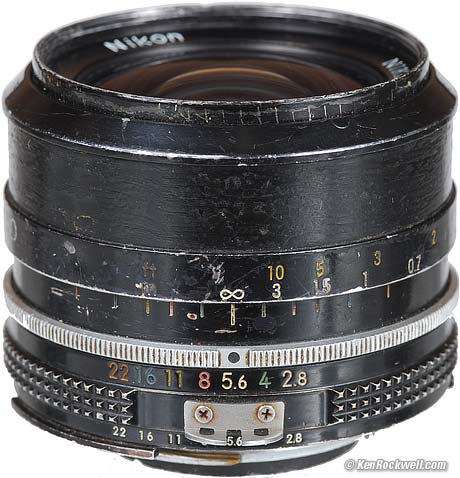
Near-mint condition AI-converted 24mm f/2.8 from the early 1970s.
Nikon's first 24mm f/2.8 optical design was sold as an F-mount (non-AI) manual-focus lens. Many of these lenses were later upgraded, like the one you see here, to AI for use with all modern Nikons.
It has 9 elements in 7 groups and came in three different cosmetic variations. All of these variations focus to 1 foot (0.3m), take the same HN-1 hood and 52mm filters.
Early versions were single-coated, and were multicoated starting with the NIKKOR-N•C Auto version of 1972.
Nikon made a combined total of about 225,000 of these F-mount 24mm f/2.8 lenses.
1977-1981: AI and New Optics
Nikon updated the optics to 9 groups with 9 elements, and added close-range-correction. This is the same optical design used today.
Nikon made about 150,000 of this version.
1981-today: AI-s
Nikon slightly updated the mechanics and diaphragm controls to AI-s. I have a separate review of this 24mm f/2.8 AI-s. This manual-focus lens is still sold today, often in-stock at B&H Photo Video, for about $525.
The AI-s version is Nikon Product Number 1416.
Nikon has made over 150,000 of these, and still makes them today.
1986-1991: AF
Nikon's first autofocus (AF) 24mm mounted the same optics in a plastic-covered, metal-based mount.
Photographers hated them because they looked so cheap and trashy compared to the superb manual focus lens which is still sold today.
This nasty first version works great, but has a vestigial thin, hard manual ring. It has a spring-loaded rotating minimum aperture lock.
Nikon made about 50,000 of these.
1991-1994: Rubber Focus Ring AF
Nikon updated the nasty thin focus ring to rubber-covered plastic.
Nikon also made about 50,000 of these.
1994-today: AF-D
Nikon added distance encoding, and sells this lens today.
Nikon has made about 125,000 of these AF-D so far.
Specifications top
Intro Specifications Performance Compared Recommendations
Name
Nikon calls this the Nikon AF-NIKKOR 24mm f/2.8 D. The "D" means this lens tells the camera the distance to the subject, which helps the exposure meter, especially with on-camera flash.
The earlier 1986-1994 model was called the Nikon AF-NIKKOR 24mm f/2.8, without the D.
Optics
9 elements in 9 groups.
It's multicoated, which Nikon calls Nikon Super Integrated Coating (SIC).
CRC Close-Range Correction (floating elements) is used for optimum performance at every distance.
Diaphragm
Nikon 24/2.8 AFD at f/5.6. enlarge.
7 straight blades.
Stops down to f/22.
Close Focus
1 foot (0.3m).
Maximum Reproduction Ratio
1:8.9.
Hard Infinity Focus Stop?
Yes.
This is great for astronomy; just turn to the stop and you have fixed laboratory-perfect focus all night.
Focus Scale
Yes.
Depth-of-Field Scale
Yes.
Infra-Red Focus Index
Yes, white dot in depth-of-field scale.
Aperture Ring
Yes.
Full-stop clicks.
Filter Thread
52mm, plastic.
Does not rotate.
Size
Nikon specifies 46 mm extension from flange (55.5 mm overall) by 65.4 mm diameter.
Weight
9.445 oz. (267.8g), as measured by me.
Nikon specifies 9.5 oz. (270g).
Hood
HN-1 metal screw-in, not included.
Case
Optional CL-30S, No.61, CL-34A, or CL-S1.
Teleconverters
TC-200/201 and TC-14A, but why on Earth would you want to convert this to a manual-focus 33mm f/4 or 48mm f/5.6 lens when it's less expensive, lighter, less expensive, faster, better and easier to carry a dedicated 50mm f/1.8 lens instead?
Introduced
Optical design first introduced as the manual-focus AI NIKKOR in 1977.
First AF version introduced 1986.
Current AF-D version introduced 1994.
Nikon Product Number
1919.
Price, USA
$392 new or about $175 used if you know How to Win at eBay, March 2018.
$360, December 2009.
Performance top
Intro Specifications Performance Compared Recommendations
Overall Focus Distortion Ergonomics Falloff Filters
Color Fringes Mechanics Sharpness Sunstars
Overall back to Performance back to top
The Nikon 24mm f/2.8 AF-D is inexpensive, compact and excellent.
Its optics have been a favorite of Nikon photographers for decades.
There is no better or sharper 24mm lens or zoom in Nikon's stable.
Focus back to Performance back to top
Auto/Manual Switching
You have to move the switch on the camera to get Auto or Manual focus.
In AF, the manual focus ring moves. Keep your fingers off of it, because if you don't, the lens won't focus.
AF Speed
One full turn (two half-turns) of the AF screw pulls focus from infinity down to 2 feet, which is fast!
AF Accuracy
AF is always right-on.
Manual Focus
Manual focus is easy, once you've moved the switch on your camera.
This lens works great on all manual focus and film cameras.
Distortion back to performance back to top
At 10 feet (3 meters), there is a little bit of complex barrel distortion. If it bothers you, Photoshop's simple Lens Distortion Tool can't fix it. You'll need a higher-order correction tool, like a plug-in for DxO, if it exists.
At infinity on DX, the 24/2.8 AFD has some simple barrel distortion, easy to correct in Photoshop's Lens Distortion Tool at +2.0.
Ergonomics back to performance back to top
Ergonomics are great, except for having to fiddle with a switch on the camera to go between auto and manual focus.
For use on manual-focus cameras, it is almost as good as a dedicated manual focus lens.
Falloff (darkened corners) back to performance back to top
Falloff on FX is no big deal.
There is a little at f/2.8, and almost none at f/4. It's gone by f/5.6.
You won't see this in photography of anything except blank walls.
It won't be an issue at all on DX (see crop factor).
I've greatly exaggerated it below by shooting a gray field and presenting it against a gray background. In real photos, it's minor at f/2.8 and invisible by f/4.
Nikon 24mm f/2.8 AF-D falloff on FX and film at infinity, no correction.
© 2009 KenRockwell.com. All rights reserved.
|
Filters, Use with back to Performance back to top
The filter ring does not rotate.
Be careful with 52mm filters. There is not much leeway before you get vignetting.
You're OK with standard Nikon-brand filters.
Standard rotating-mount filters, like grads, might vignette a little.
Go easy on the polarizers; 24mm is wide enough that because the sky changes its own polarization with angle, you'll usually be darkening different parts of the sky different amounts. This usually looks like a mistake.
Forget using two filters at the same time.
Lateral Color Fringes back to Performance back to top
There are no lateral color fringes on the D3, which would correct them if the lens had any.
Sometimes the D300 will show some, which is odd because the D300 ought to correct them, too.
Mechanics back to Performance back to top
The 24/2.8D is mostly metal, inside a plastic case. I prefer a metal filter ring, but it does keep your fingers from freezing to it in winter.
Rear, Nikon 24mm f/2.8D AF. enlarge.
Barrel Exterior: Plastic.
Filter Threads: Plastic.
Focus Ring: Plastic; rubber covered.
Focus Helicoids: Could be metal.
Depth-of-Field Scale: Yes.
Internals: Seem like mostly metal.
Aperture Ring: Plastic with painted numbers.
Focus Geartrain: Metal.
Mount: Dull-chromed brass.
Markings: Paint.
Serial Number: Laser engraved onto bottom rear of aperture ring.
USA Models Designated by: "US" Prefix to serial number.
Ass-Gasket (dust seal at mount): No.
Noises When Shaken: Mild clunking from AF helicoid.
Made in: Japan, at least the one I show here from about 2005.
Sharpness back to Performance back to top
Warning 1: Image sharpness depends more on you than your lens.
Warning 2: Lens sharpness doesn't mean much to good photographers.
With those caveats, the 24mm f/2.8 AF-D is a very sharp lens. It is as sharp or sharper than the 24-70mm f/2.8 AF-S at 24mm throughout most of the field Only the farthest corners of the 24-70mm are a bit sharper at f/2.8, but this fixed lens is sharper throughout the rest of the image where it counts.
It's always sharp in the center. Compared to a Tokina 28-70mm f/2.8 ATX, this Nikon lens is much sharper in the center at f/2.8.
It's mushy in the corners on FX at f/2.8, and somewhat at f/4, so stop down to at least f/5.6 if you're going to look at the corners through a microscope.
Stop down to f/11 for the sharpest corners under the microscope. Otherwise, it gives 90% performance in the corners by f/5.6.
Sunstars back to Performance back to top
With its straight 7-bladed diaphragm, the 24/2.8 makes magnificent Nikon-hallmark fourteen-pointed sunstars on bright points of light.
Compared top
Intro Specifications Performance Compared Recommendations
Most people today would rather own the 14-24mm f/2.8 AF-S and 24-70mm f/2.8 AF-S, each of which duplicates the function of this 24mm f/2.8 lens.
Nikon 14-24mm, 24mm f/2.8 and 24-70mm AF-S. bigger.
Which would you rather carry?
Today's FX Nikon photographer usually owns, or wants to own, the Trinity of the 14-24mm AF-S, 24-70mm AF-S and 70-200mm AF-S VR-II.
Let's think about this. If you've got a 70-200mm, do you really need both the 14-24 and the 24-70mm, each of which duplicates the 24mm range?
Why not think like a pro and take only this 24mm instead of four pounds of 14-24mm and 24-70mm along with your 70-200mm?
I'm serious: very few people know how to make use of any lens wider than 24mm. You don't need and don't want the 14-24mm if you have this 24mm.
Pros know they don't need any lenses between 24mm and the 70mm end of their 70-200mm. If they need a looser or tighter framing, they simply take a few steps forward with the 24mm, or a few steps back with the 70mm.
Galen Rowell traveled the world with just a 24mm f/2.8 and a 75-150mm zoom.
Leave the 14-24mm and the 24-70mm back at the store.
How about the relative performance?
I shot all three of these at 24mm on a D3.
This 24mm f/2.8 is as sharp as the 24-70mm zoom at each aperture. EIther is superior to the 14-24mm zoom at 24mm.
How about distortion? Let's see what factor is needed in Photoshop's Lens Distortion tool to correct each at 10 feet (3 meters):
Lens |
Factor |
14-24mm at 24mm |
-0.4 |
24/2.8D |
0* |
24-70mm at 24mm |
+4.0 |
* Some waviness remains
So let's see.
The 14-24mm has as little distortion as this 24mm f/2.8, but it's not as sharp.
The 24-70mm is about as sharp as this 24mm f/2.8, but it has hellacious and often obvious distortion at 24mm.
The best lens at 24mm is this one, and it uses simple 52mm filters, not the huge 77mm of the 24-70mm. The 14-24mm can't use any kinds of filters at all.
Leave the 14-24mm and the 24-70mm back at the store.
Recommendations top
Intro Specifications Performance Compared Recommendations
The Nikon 24mm f/2.8 AF-D is an excellent performer, and a fraction of the size, weight and price of any zoom. It can replace both the 14-24mm and 24-70mm zooms, saving you over $3,000 (and almost four pounds of baggage) with improved performance.
It is worlds better than the seemingly similar 28mm f/2.8 AF-D.
This compact 24mm lens could be the only wide lens you ever need. I'm very serious: the more decades I do photography, the more I realize that my pictures today would be so much better if I would have shot with just the lens or two like this that I had decades ago, and spent my concentration and research time on learning how to take better pictures. Instead, like most of you, I also wasted most of the past couple of decades researching and buying more gear that I didn't really need and didn't do anything different than my gear did back in the 1970s.
Deployment
I use a clear (UV) protective filter instead of a cap. I only use a cap when I throw this in my bag, otherwise I leave a clear filter on my lens at all times.
The very best protective filter is the Multicoated Hoya HD3 52mm UV which uses hardened glass and repels dirt and fingerprints. It's expensive, but it will last forever long after this lens is gone.
For less money, the B+W 52mm 010 is an excellent filter, as are the multicoated B+W and the basic multicoated Hoya filters and the most basic Hoya multicoated filter, but the Hoya HD3 is the toughest and the best.
Filters last a lifetime, so you may as well get the best. The Hoya HD3 stays cleaner than the others since it repels oil and dirt.
If I was working in nasty, dirty areas, I'd forget the cap, and use an uncoated 52mm Tiffen UV filter instead. Uncoated filters are much easier to clean, but more prone to ghosting.
For color slides like Fuji Velvia 50, I use an old Nikon A2 or new 52mm Hoya HMC 81A outdoors.
For B&W film outdoors, I'd use an old Nikon Y48 or O56, or a new 52mm Hoya HMC K2 Yellow or 52mm Hoya HMC Orange.
Acknowledgment
Many thanks to Dick in Rancho Mirage who got me access to this lens for this review.
© Ken Rockwell. All rights reserved. Tous droits réservés. Alle Rechte vorbehalten.
Help Me Help You
I support my growing family through this website, as crazy as it might seem.
The biggest help is when you use any of these links when you get anything. It costs you nothing, and is this site's, and thus my family's, biggest source of support. These places always have the best prices and service, which is why I've used them since before this website existed. I recommend them all personally.
If you find this page as helpful as a book you might have had to buy or a workshop you may have had to take, feel free to help me continue helping everyone.
If you've gotten your gear through one of my links or helped otherwise, you're family. It's great people like you who allow me to keep adding to this site full-time. Thanks!
If you haven't helped yet, please do, and consider helping me with a gift of $5.00.
As this page is copyrighted and formally registered, it is unlawful to make copies, especially in the form of printouts for personal use. If you wish to make a printout for personal use, you are granted one-time permission only if you PayPal me $5.00 per printout or part thereof. Thank you!
Thanks for reading!
Mr. & Mrs. Ken Rockwell, Ryan and Katie.

